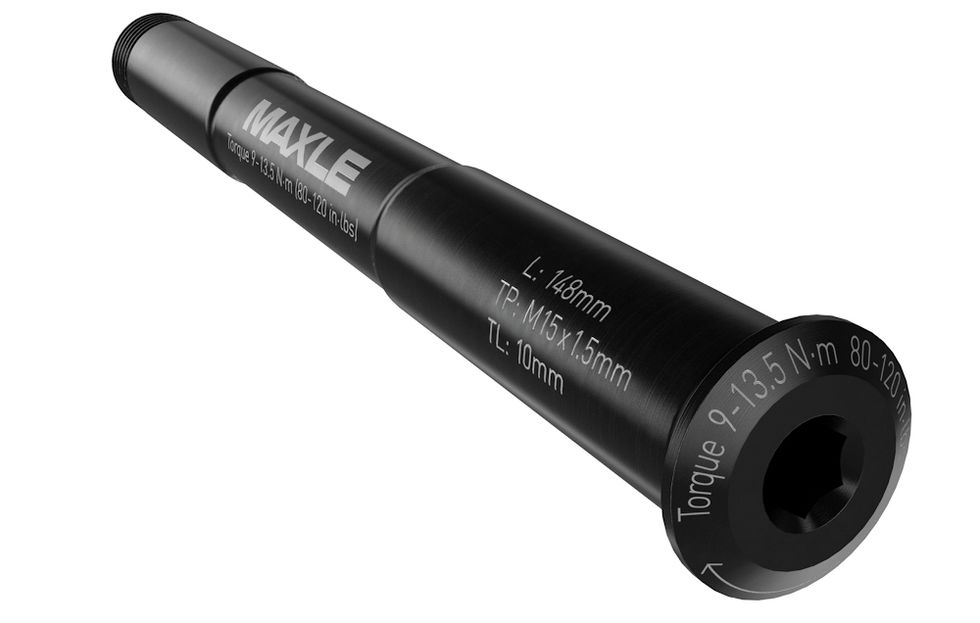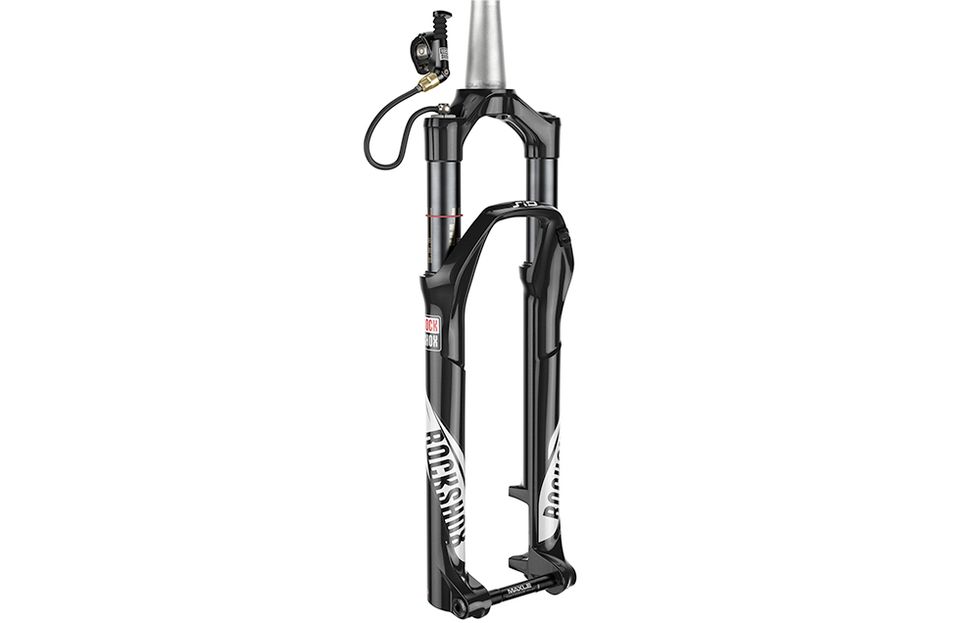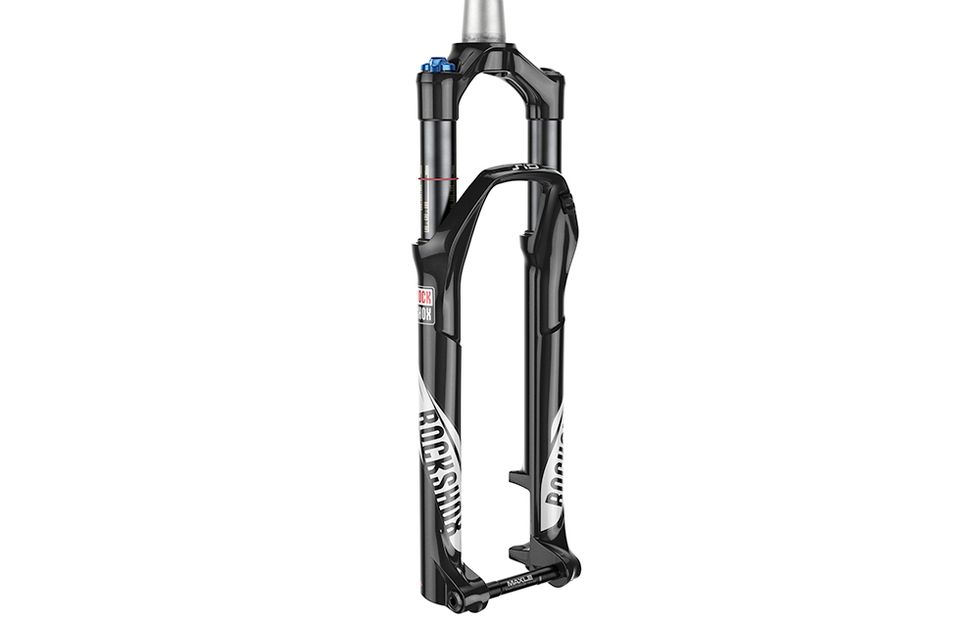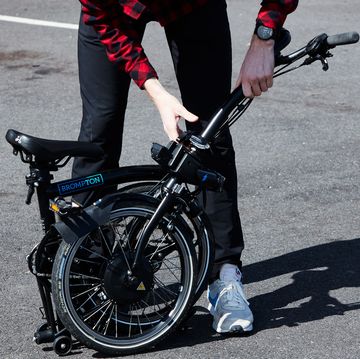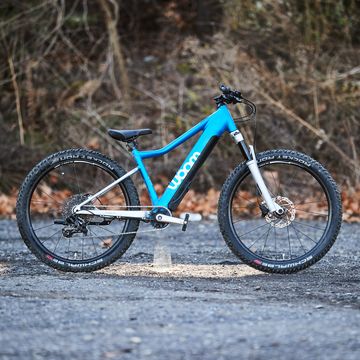When it was first introduced in 1998, the RockShox SID (Superlight Integrated Design) was the company’s premier cross-country racing fork. In the years since, mountain biking—and mountain bikes—have evolved. The SID evolved, too, becoming not just an XC race fork, but also a light-weight trail fork with up to 120mm of travel.
For 2017, RockShox restores the SID to its original pure-race form.
RELATED: RockShox Reverb Dropper Post Gets a Huge Makeover for Summer 2016
The new SID, available this July, features a new chassis optimized for 100mm-maximum travel, allowing engineers to carve about 100 grams out of the platform. In its lightest form, the new SID comes in at 1,366 grams (3.01 pounds). Other updates include a new air spring, a Boost-spacing option, and a new damper in higher-end models.
The SID Line
The 2017 SID fork line consists of four models. All use the same magnesium lowers, straight-wall 32mm aluminum upper tubes, and air spring, and are offered for 27.5-inch, 27.5+, and 29-inch bikes, in both 100x15mm and Boost 110x15mm hub spacing.
• SID World Cup $1,150, $1,225 with OneLoc remote
This is the top-end, lightest SID. This one gets all the new stuff, but is set apart from the rest of the SID line by the carbon crown and steerer. In the previous RockShox forks, the carbon crown/steerer saved weight, but was less stiff than the same fork with an aluminum crown and steerer. RockShox did not respond to a request for stiffness data. For an extra $75, this fork is offered with RockShox’s cable-actuated OneLoc remote. Claimed weight in lightest form: 1,366 grams.
• SID RLC $845, $915 with OneLoc remote
This SID is very much the same Charger damper-equipped fork as the World Cup edition, but the RLC uses an aluminum steerer and forged hollow-aluminum crown instead. (This crown and steerer are shared by the SID models below.) Claimed weight in lightest form: 1,530 grams.
• SID XX $845, includes XLoc remote
This version is for the lockout lovers. The XX uses the new chassis and comes with the XLoc hydraulic lockout remote standard (instead of the cable-actuated lockout offered for the other models), but it uses the older Motion Control XX damper. Claimed weight in lightest form: 1,572 grams.
• SID RL $600, $670 with OneLoc remote
This fork uses the new chassis, but the older Motion Control DNA damper. Though it’s the cheapest SID, it is the second-lightest. Claimed weight in lightest form: 1,523 grams.
RELATED: First Look: 2017 Fox 32 Step-Cast Suspension Fork
New Chassis
The 2017 SID maintains the 32mm upper tubes from the previous version, but where the previous version was available up to 120mm, the new version is built in a dedicated 100mm platform (adjustable to 80mm) This allows the use of lighter upper tubes and shafts. A few more grams are pulled out by cutting windows in the dropouts.
Another benefit of the shorter-travel platform, according to RockShox’s press materials: It can be built lighter, but the company’s internal stiffness targets can still be met; stiffness data was not provided.
According to the information provided by RockShox, the new SID’s stiffness can be enhanced with Torque Caps. This is a two-part system that increases the contact area between the fork’s dropouts and the hubs. To take advantage of the increased stiffness, a wheel (like SRAM’s ROAM 60) or hub (like SRAM’s 900 hubs) with Torque Caps is required. The SID’s dropout is compatible with standard hubs as well. No information on how much Torque Caps improve stiffness was provided.
Other new details include: a tool-free hose guide; lower-friction seals; and new adjustment knobs and air-spring cap. Two axle options are available. The tool-free Maxle Ultimate QR is included with aftermarket forks; the lighter Maxle Stealth thru-bolt ($39) is stock on OE forks.
New Damper
Top-end models of the previous SID used RockShox’s Motion Control DNA damper, which was the company’s highest-end damper. However, that damper’s position has been usurped by the Charger cartridge damper, first seen in the exemplary Pike trail fork. So, guess what? Top-end models (World Cup and RLC) of the new SID get Charger dampers.
But it's not exactly the same Charger as the Pike's. The architecture is the same, but while the Pike’s damper has three positions (open, pedal, lock), the SID’s damper has two portions: open and lock, with the lock position’s blowoff threshold set XC-race high. Compression damping in the open mode can be fine-tuned with a knob above the lockout lever.
New Spring
All models of the '17 SID receive a re-tuned air spring. The materials I received before the fork’s official unveiling note that a "more linear spring curve" makes the fork suitable for a wider variety of rider weights; however, the spring curve is still tunable with RockShox Bottomless Tokens, which can be added or removed to change the air spring’s progression.
For smoother landings, the new SID receives the progressive Jounce bottom-out bumper, first found in the RockShox RS-1.
RockShox SID Vs. FOX 32 SC
A few weeks ago, FOX unveiled its lightest fork ever, the 32 Step Cast. Like the new SID, the 32 SC is a 100mm-max travel, cross-country race fork. On paper, the 32 SC is slightly lighter: 1,352 grams versus 1,366 grams.
Price-wise, the FOX 32 SC line runs from $619 to $1,569, while RockShox spans $600 to $1,225. For top-end equipment, you have your choice of technology: The most expensive FOX fork uses the electronic iRD remote, while the most expensive RockShox uses a carbon crown and steerer, and cable-actuated remote. In this form, the RockShox likely wins on weight because of the battery required for FOX’s remote.
Factoring out the top-end models, the new SID is slightly cheaper than a comparable FOX, and RockShox offers more options overall.
I can’t comment on performance yet. I’ve ridden a FOX 32 SC, but I have yet to ride the new SID. With the new damper and new air spring, I expect good things from the new SID, and a very competitive battle for XC-race fork supremacy.



